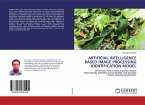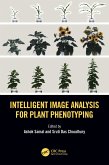The Global Strategy for Plant Conservation (GSPC) was signed by 188 countries under the Convention on Biological Diversity (CBD) to safeguard plant diversity. There are 16 objectives for the successful implementation of this work, which are divided into five main themes in the group: (1) recognizing and recording botanical diversity;(2) plant diversity preservation; (3) utilizing plant diversity in a sustainable manner; (4) encouraging plant diversity awareness and education; and (5) enhancing the ability to conserve plant diversity. Since the early 1990s, numerous researches using various technologies, including image processing, writing extraction, and identification, have been conducted in an attempt to identify plant images. Based on the symbolic shape of the leaf, ventilation, and two techniques, it may be split into three varieties. Integrated plants with natural life and proper classification helps to preserve natural life. Plant taxonomy is performed using a variety of techniques and plant leaves, including cellular and molecular biology. The leaves can be divided into plants as the plants are more seasonal than the other organs.
Hinweis: Dieser Artikel kann nur an eine deutsche Lieferadresse ausgeliefert werden.
Hinweis: Dieser Artikel kann nur an eine deutsche Lieferadresse ausgeliefert werden.








